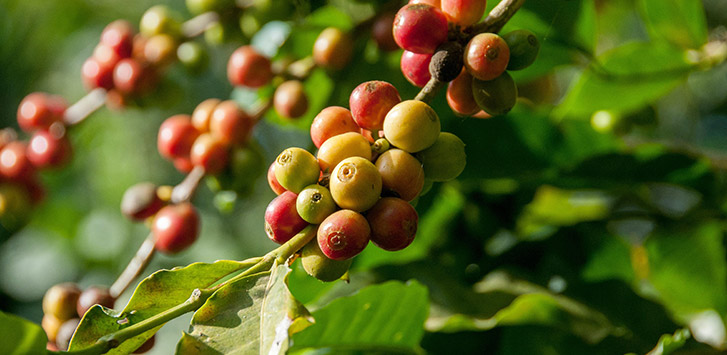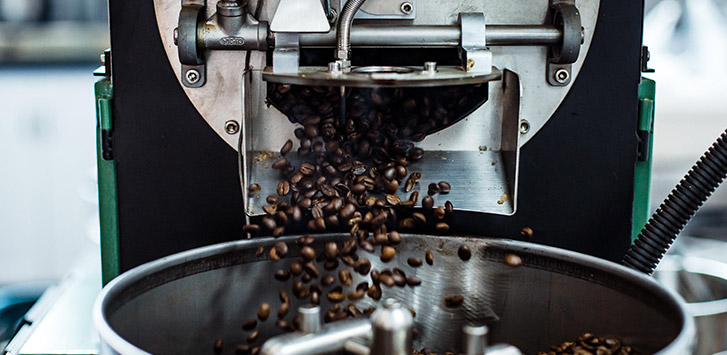
New coffee bean favorites are emerging from Africa, challenging old classics and offering enticing, unique flavors. Burundi, the heart of Africa, as it’s so aptly nicknamed, is located in central Africa between Rwanda, Tanzania, and the Congo. About the size of Maryland, Burundi grows some of the highest quality, African coffee available. In fact, in 2021, over 26 million lbs. of Burundi green coffee beans were exported, which was 100% of its annual crop.
History of the Burundi Coffee Industry
The Burundi coffee industry began back in the 1930s when the Belgians gave them Arabica coffee plants. To this day, most of Burundi’s coffee plants are Arabica (96%) with only 4% Robusta.
Since the start, Burundi's struggled with political instability, decolonization, a civil war, and genocide. Originally, the Burundi government controlled the coffee industry. They created washing stations, forbidding home processing, controlling the supply chains.
Instead of focusing on quality, the government focused on quantity. Every person who lived in a rural area was force to plant at least 50 coffee trees. In the past few years, Burundi freed the coffee industry from the government, giving the power back to local farmers.
Currently, more than 800,000 families are involved in the Burundi coffee industry, averaging 250 trees per farm. Farmers use the wet-processing method with the double-washed method that is common in the Kenyan coffee industry.
For wet-processing, farmers pour the coffee cherries into basins of water. Any cherries that float are deemed unripe and are separated from the others to be sold later.
Once washed, the coffee beans undergo 12+ hours of fermentation. When the first round is finished, the cherries undergo a second round in water. While farmers grow other crops, such as tea and cotton, coffee is an integral part of Burundi’s economy, making up 69% of Burundi’s total exports.
Burundi Growing Regions
Burundi is perfect for growing coffee beans – perks of the volcanic soil throughout the country. Most coffee beans grown in this area are classified as Strictly High Grown or Strictly Hard Bean based on the country's various altitudes, all ranging between 1,200 to 2,000 meters above sea level.
The top four growing regions in Burundi are Buyenzi, Mumirwa, Bweru, and Bugesera. Most of these growing regions are located in the northern and central areas of Burundi.
Buyenzi
Buyenzi is located in Northern Burundi, bordering Rwanda. Some of this region’s best coffee beans come from the sub-regions of Kayanza and Ngozi. Kayanza is the most famous, producing coffee beans with high acidity, bright citric notes, and high SCA ratings. Ngozi has a lower coffee yield than Kayanza but often ranks higher with consistent cupping scores about 85.
Mumirwa
Mumirwa borders Rwanda and the Congo. The consistent temperatures, high altitudes, and annual rainfall of 1,100 mm. create great growing conditions for coffee plants.
Bweru
The growing region of Bweru is located in Northeastern Burundi, along the Tanzanian border. Bweru boasts rich, nutrient-dense volcanic soil that takes full advantage of the mild climate and decent annual rainfall.
Bugesera
Coffee from Bugesera is a low yield crop, but it often receives scores of 85 or higher in the Cup of Excellence.
A few other growing regions are Muyinga, Kirundo, Cibitoke, Bubanza, Karuzi, Mwaro, Muramvya, Bururi, and Makamba.
Burundi Coffee Flavor Profile
If you’ve ever tried Rwandan coffee before, then Burundi coffee may taste familiar to you. Burundi coffee is characterized by clean, delicate flavors that give way to darker notes when roasted longer. The coffee’s rich body is perfectly balanced by the bright acidity that is typical of an African coffee.
When grown in lower altitudes, the coffee beans have a lighter body with notes of chocolate and hazelnut. These beans do best with a medium to dark roast. When grown in higher altitudes, the coffee beans have greater acidity with citric tones and notes of fruits, flowers, and honey.
Burundi coffee can also cup similarly to Guatemalan coffee. Burundi coffee beans grow during Guatemala’s off-season, so they’re great alternatives for one another.

Burundi Coffee Roasting Suggestions
Love light roast? Loyal to dark roast? Just trying to dip your toes in coffee roasting and want to try a medium roast? Burundi green coffee beans can handle it all.
A light roast emphasizes the sweet undertones, balanced out by the citric acidity, and notes of black tea, stone fruit, raspberry, and cranberry. But Burundi beans also create the ideal medium roast, marrying the light, fruity notes with some of the rich, darker, chocolate notes.
If you’re looking for something darker, Burundi coffee beans make a great dark roast. All the fruity notes will be roasted away, but the dark roast reveals tones of malt, chocolate, and caramel.
Brewing Recommendations
The good news? Burundi coffee beans are flexible and taste great brewed many different ways. The bad news? You have so many options to choose from.
Burundi coffee beans work great as an espresso. The dark flavors meld perfectly with rich chocolate to make a delicious mocha.
For all our at-home brewers, you should try Burundi coffee in a French Press. The French Press highlights the medium acidity, soft body, and sweet berry flavors that make this coffee so good.
If you want a cleaner cup, you can brew a pour over. This brewing method enhances the sweet, mild flavors, while letting some of those rich, darker notes come out to play. If you’d like your pour over to be a little more fruit-forward, use a paper filter in your pour over and brew with a light roast.
Conclusion
Burundi coffee is a new addition to the coffee industry. Known for unique, nuanced flavors, Burundi coffee is characterized by the bright acidity of African coffees. It's definitely worth giving a try!